The Engineer’s Eye: Finding Stories in Line and Wash
After having drawn Bengaluru for decades, J L Anil Kumar still sketches our city with the curiosity of someone seeing it for the first time. A longtime Penciljammer, he was hooked at his very first jam in Lalbagh, 16 years ago and hasn’t put his sketchbook down since.
For Anil, sketching is a way to rediscover the city, noticing flowers in a photograph, the play of light on granite slabs, or the character of an old building about to vanish. Along the way, he’s found not just forgotten corners of Bengaluru, but also friendships, life lessons, and a deep sense of connection to the places he draws.
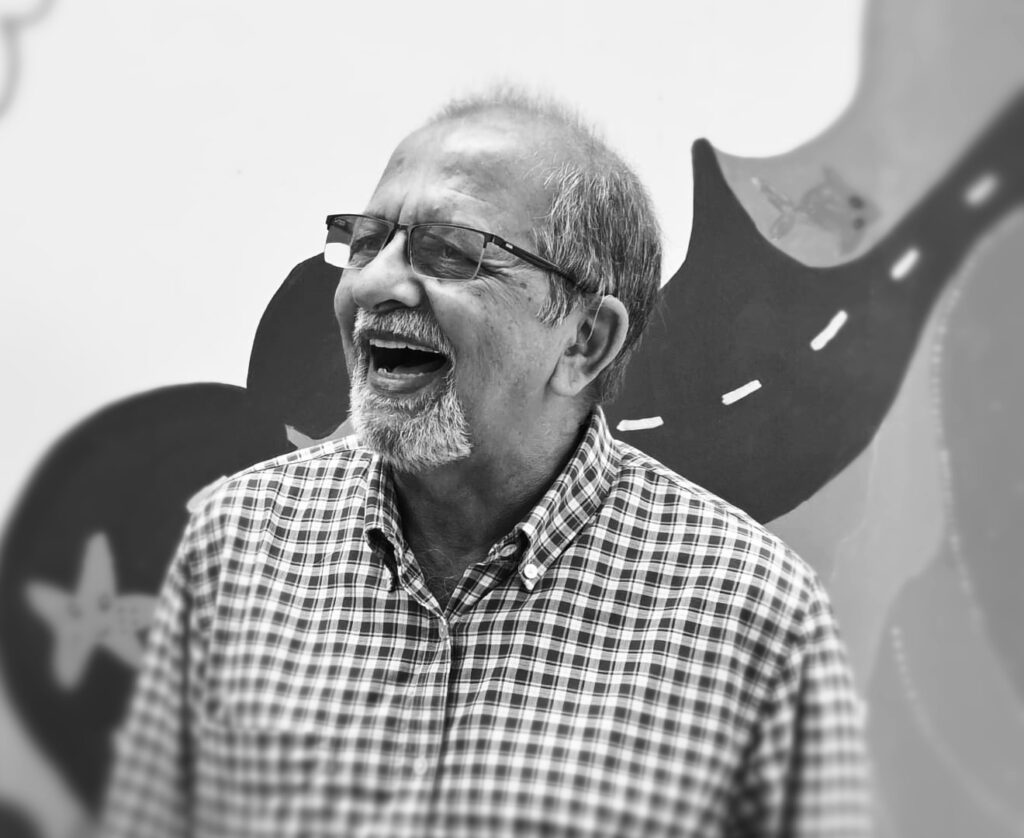
Tell us a little about yourself.
My name is J L Anil Kumar. I am seventy years old. I have a BE degree in electronics and communication and M Tech in Reliability Engineering. My professional career has mainly been in two companies and has included Quality Assurance, Engineering, R&D, and Intellectual Property. I am now an IP consultant.
What first drew you to the Penciljam community?
My introduction to Penciljam was through a colleague. She suggested that I try sketching with the community. My first jam was 16 years ago at Lalbag and I was hooked. The informal, free, and encouraging atmosphere and the company of art enthusiasts of all ages and skill levels was irresistible.
How has the act of drawing changed the way you observe and experience the city?
We tend to capture an overall picture of our surroundings. When I sketch, one detail after the other pops out of that picture. It could either be an object, colour, shadow, or value. You practically rediscover a commonplace scene. I feel that over time I have started seeing things I would have missed earlier. For example, sometime ago a friend sent me a photograph he had taken and I commented that a flower in a small part of the picture stood out. He had not seen it!
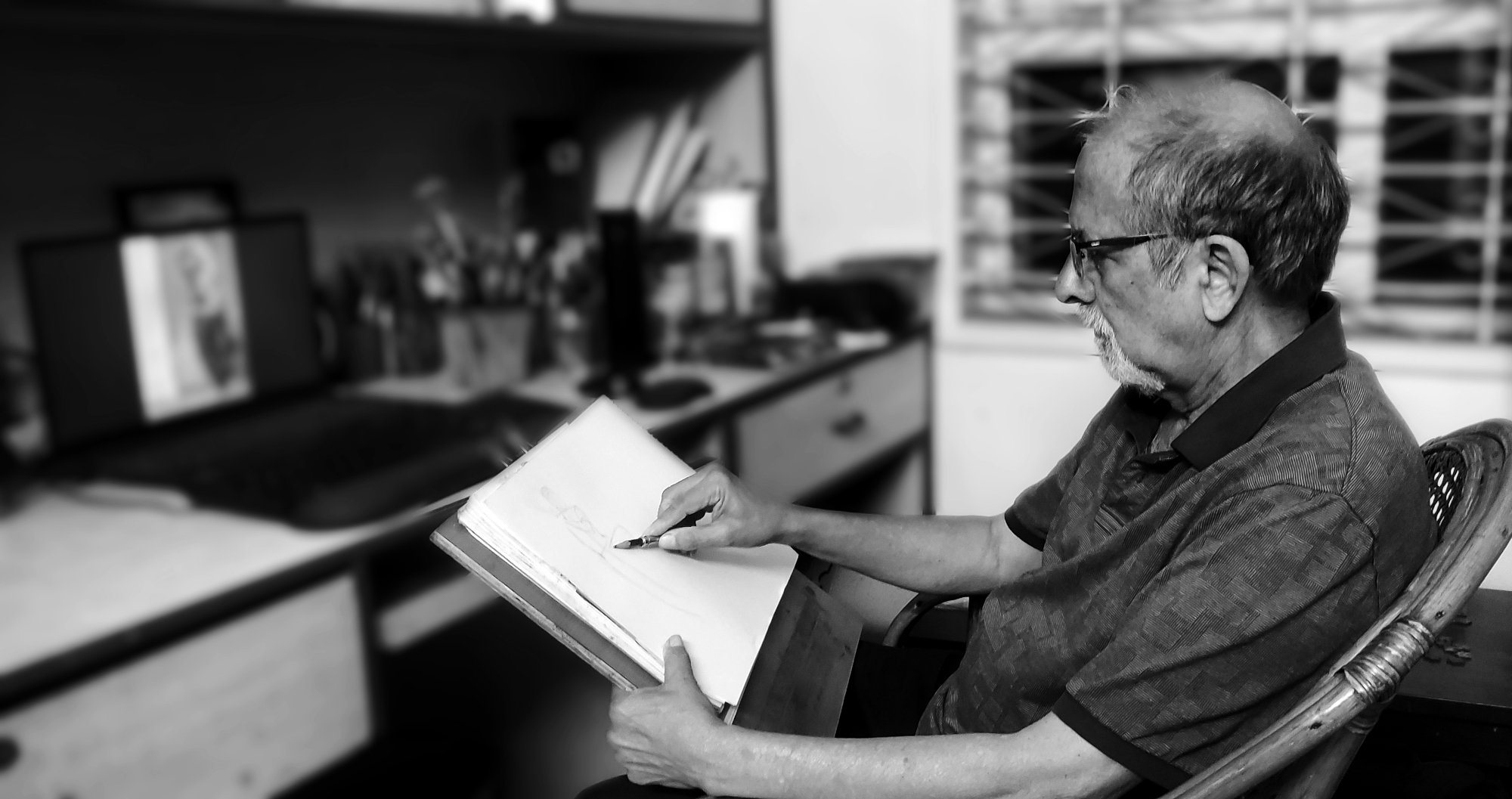
Can you share the story behind one specific drawing that is particularly meaningful to you?
A simple sketch of a lamp post with some rocks and a plant at its base. We were jamming at Hotel Airlines near Lavelle Road. I had a tendency to focus on getting the outlines right and paid little attention to contrast. One of the Jammers (George) took my sketch and made the darker elements really dark and told me. “That makes the picture pop” and it sure did, and it made me conscious of the value of values in a sketch.

Beyond creating art, what personal accomplishment do you find in documenting Bengaluru’s evolving landscape?
One of my favourite subjects is architecture – especially old buildings. Bangalore has many. Sketching them makes me feel that they have a personality and history and I know them personally. The other aspect to it is that looking at a building and looking at it to sketch it are two completely different acts. The latter reveals things you might not have noticed otherwise. At some level it is satisfying to record some buildings that may soon disappear or already have as Bangalore “develops”.
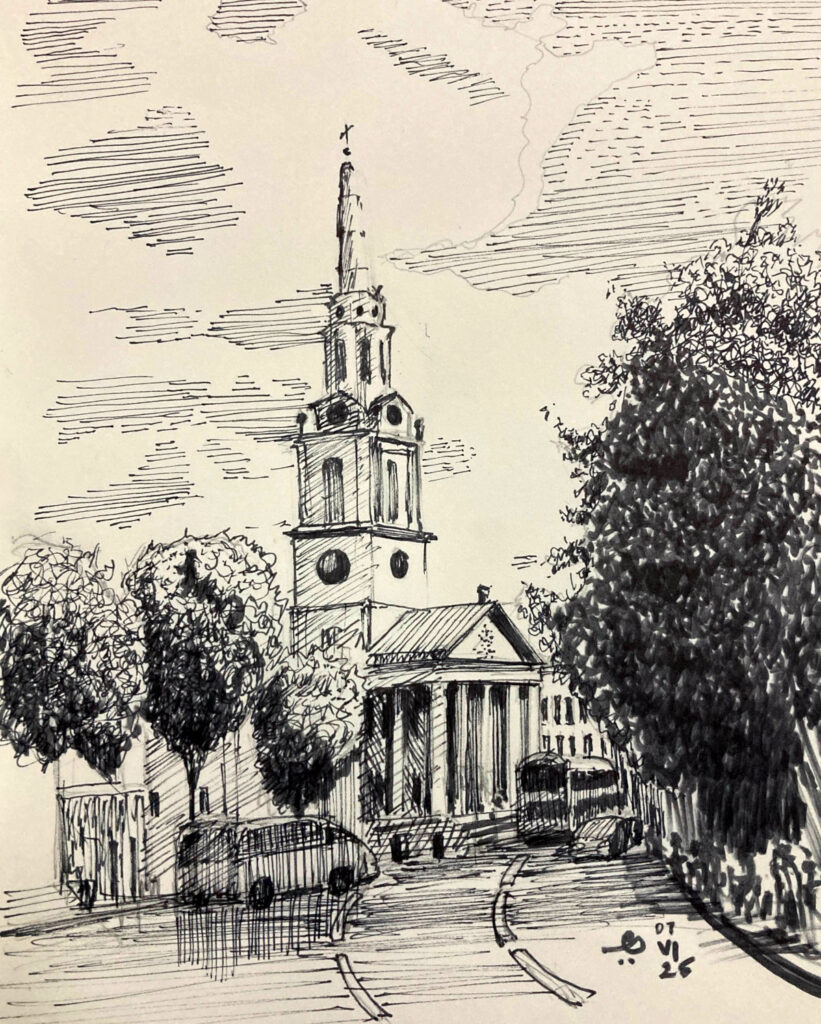
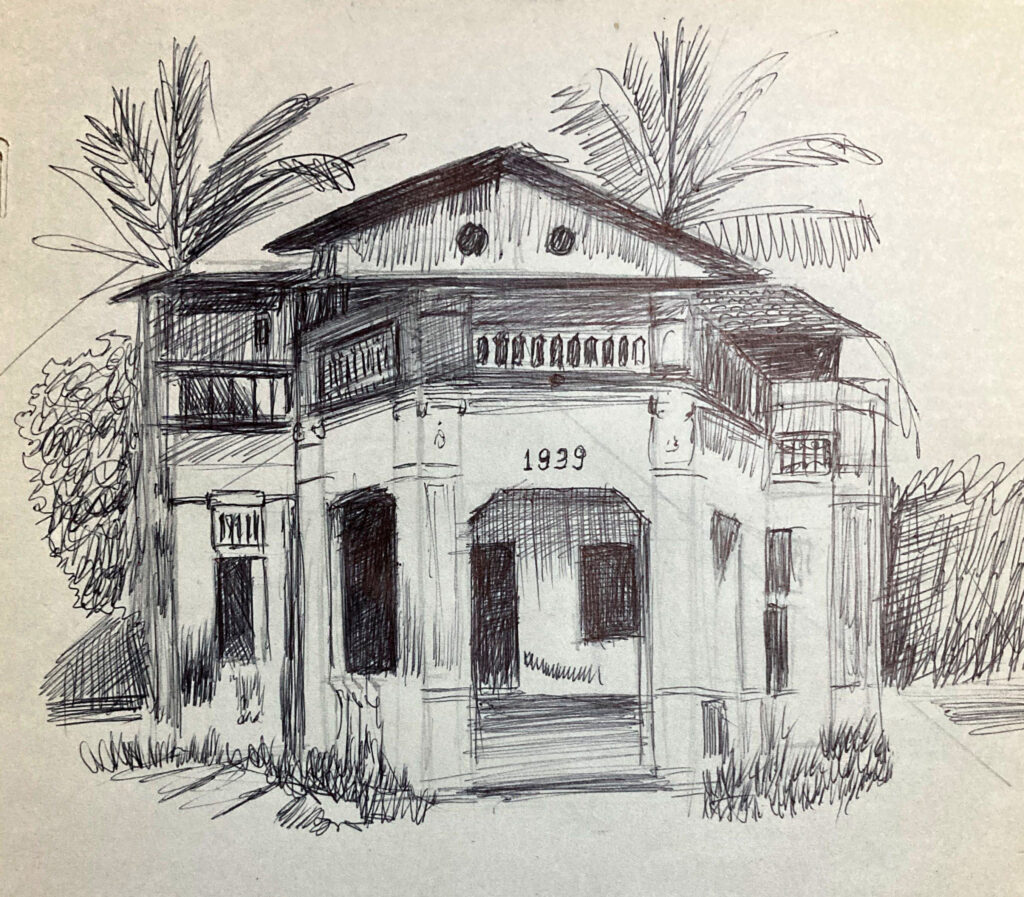


When you look back at your collection of Bengaluru sketches, what larger story do they tell about the city?
Change! Some good, some bad. Whenever an old landmark disappears it hurts. But some new spaces open up that are positive. Church Street pedestrianisation, Rangoli Metro Art Center, Museum of Art and Photography, come to mind.
Describe a moment during a sketch jam where you felt completely absorbed. Where you, the location, and your art all clicked into place.
I remember one such time while I was sketching granite slabs piled behind the government museum. There was nothing special about the scene, but the simple shapes, the light and shade, the texture seemed to absorb me completely. I don’t even know where that sketch is now!
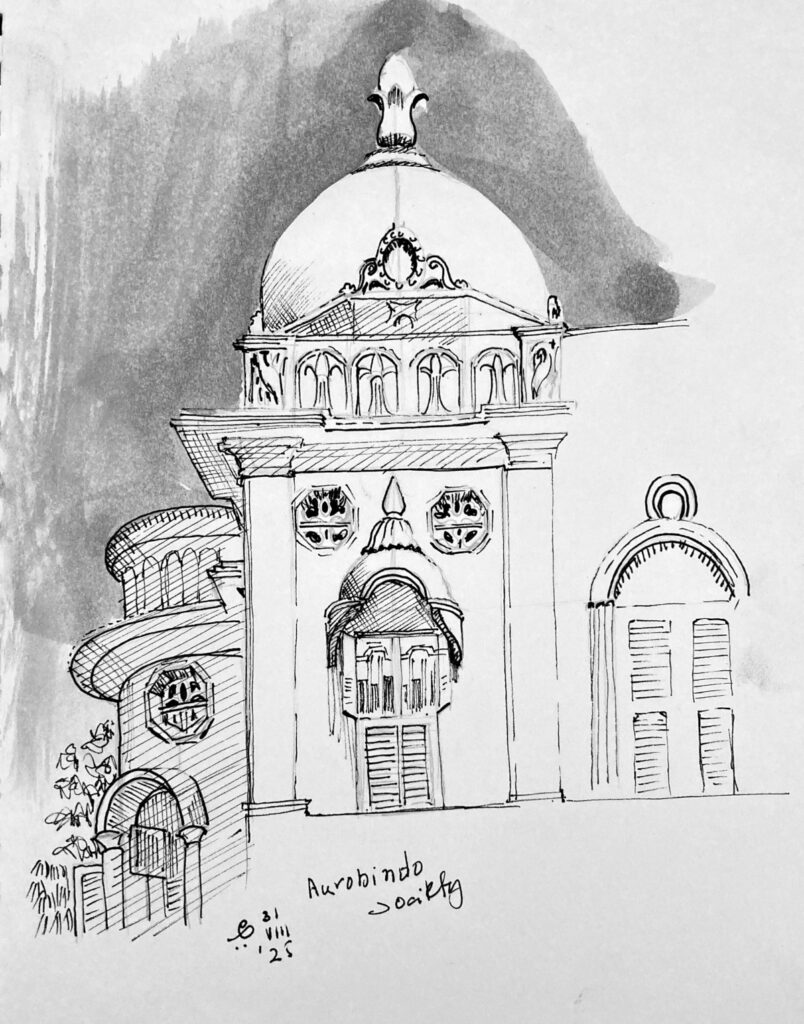
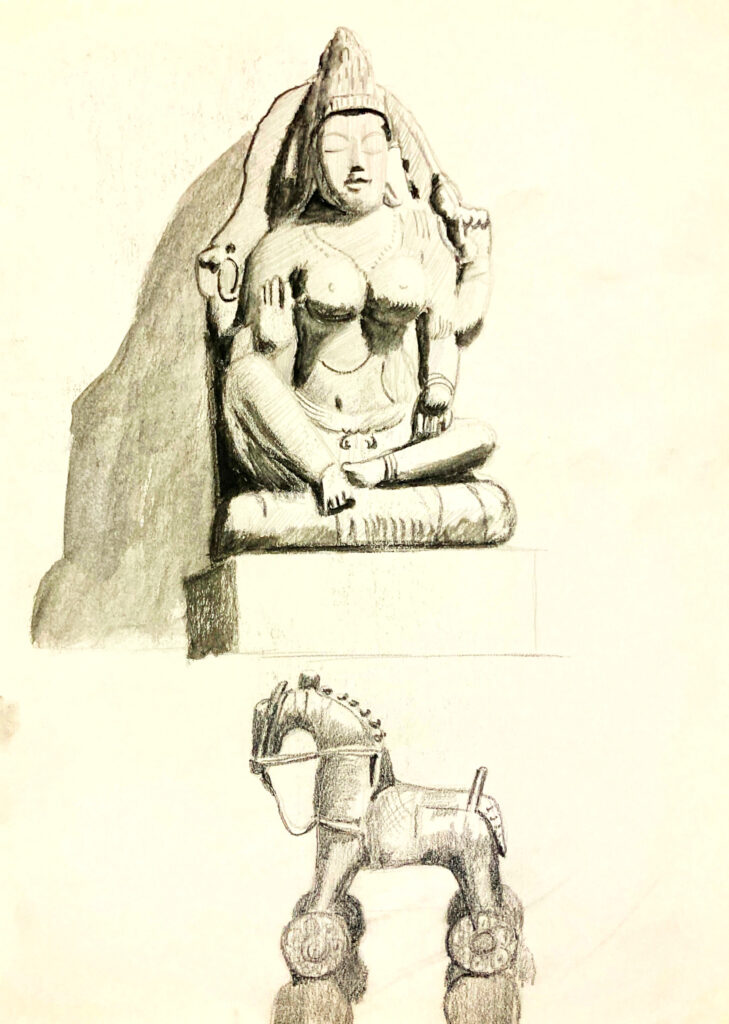
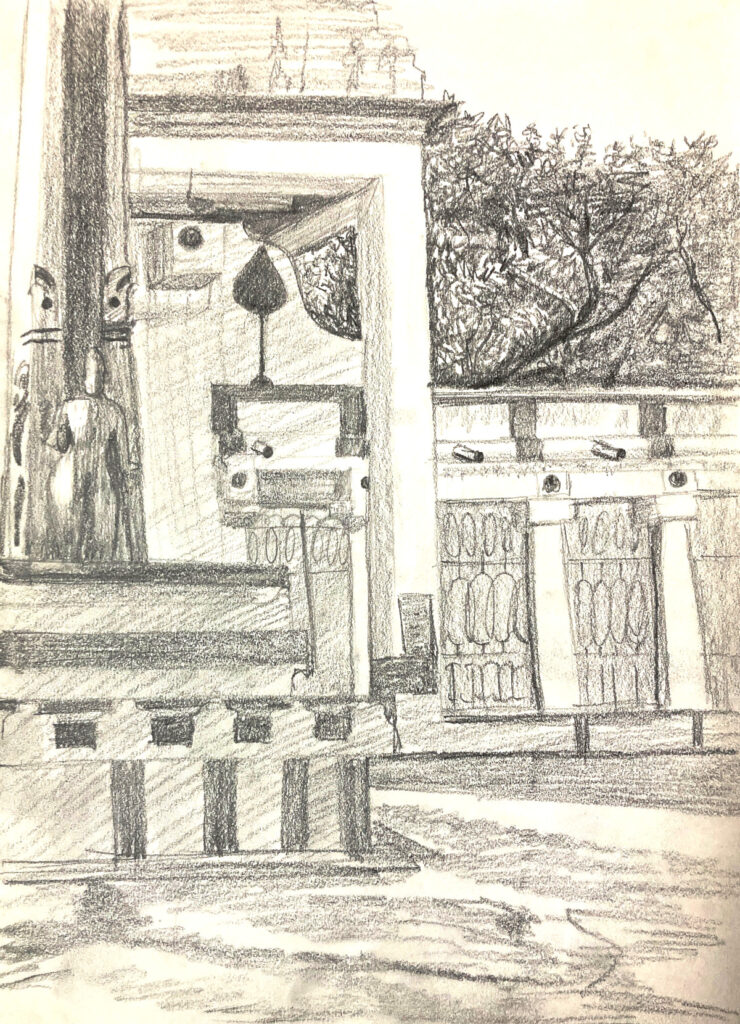
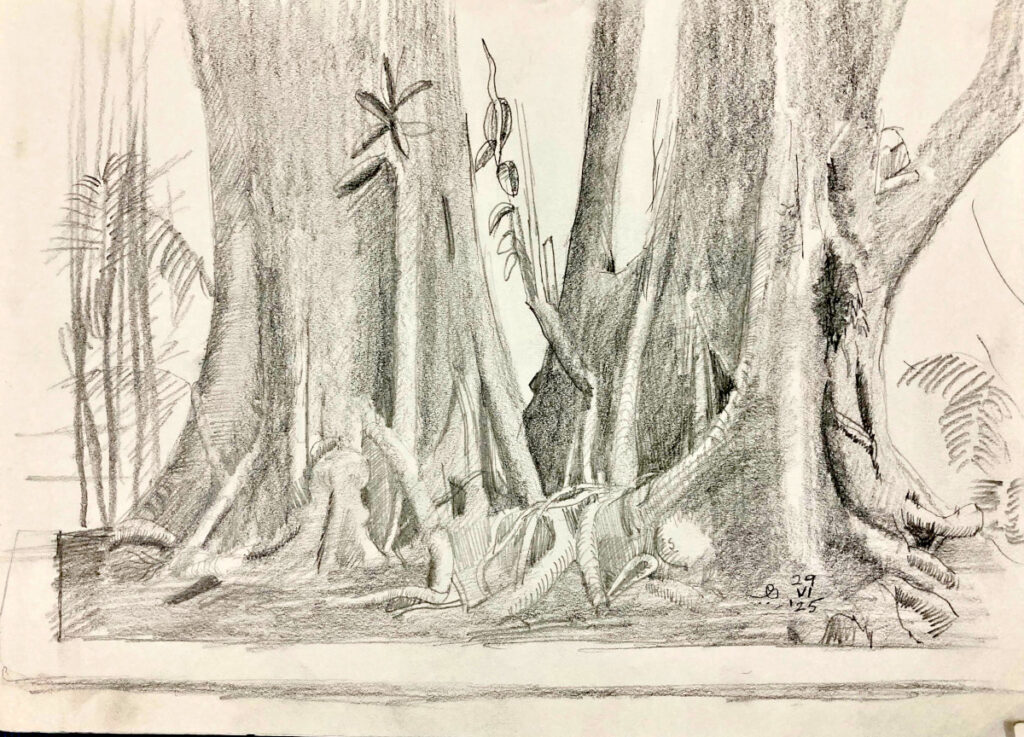
Tell us about a hidden gem in Bengaluru you discovered only because you went there to sketch.
Some years ago we jammed at a century old house that was going to be demolished. It was near Victoria Road. That was really a gem of a house that I would have never seen but for the jam. We were allowed to explore inside the house, which had ancient electrical fittings and so on.

What’s the most unexpected detail or story you’ve uncovered about a place while in the process of drawing it?
We were jamming near Commercial Street. I was drawing an old building at the junction of two roads. I realised that one of the walls had an elaborate ornamentation that looked like a window but there was no window. It was all plaster, modelled to look like a window. I discovered later, on the net, that it is an architectural decorative element called a faux window. And I have seen a few more of those in colonial era buildings in Bangalore including one on a wall of St Joseph’s college.
Have you had a memorable interaction with a local resident or a passerby while sketching? What happened?
This incident was not while jamming with the group but a solo sketching session in Vishveshwarapuram. I was sketching the upper floor of a beautiful house with a gabled roof. The ground floor was obscured by foliage and I wanted to enter the compound and see, but was not sure if I could. Then an old lady came out of the building pushing a wheelchair bound gentleman. I rushed to them and asked if I could enter the compound and look. She was hesitant. I showed her my sketchbook, and she graciously let me enter, and we had a chat about the history of the house. I was also allowed to take some photographs. A simple interaction with two gracious people.

What does drawing as part of a group add to your creative process?
While I start every day with drawing alone at my desk and enjoy it thoroughly, drawing with a group is always a learning experience, without exception. I see the work of another who has drawn the same subject as I have but treated it completely differently. It is an eye-opener – how the other person has looked it and interpreted it. I also watch other people draw and learn different techniques.
How has being part of this community influenced your artistic style?
Confidence got a boost on the very first jam! Watching others work on the same scene is always a learning experience – some conscious, others subconscious. More than the style and confidence, my patience and perseverance have improved a lot, which in turn, has improved my confidence, sometimes even in attempting drawing something that I would earlier hesitate to do since it would need a lot of time.
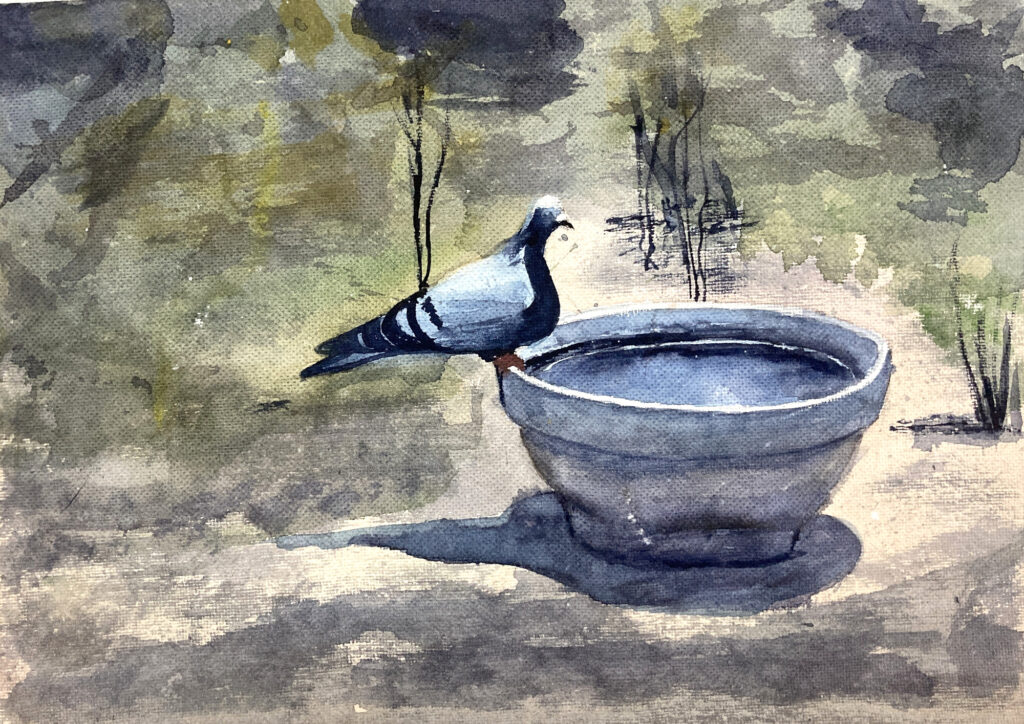
What advice would you give to someone who is hesitant to join their first Jam?
Treat the first jam as a test to see if you like it. If you are concerned about your skill level, you can forget about it. You will find the people friendly, encouraging, and appreciative. Then attend at least a few more jams, and I am certain that you will keep coming back.
Is there anything else you’d like to share about what sketching Bengaluru means to you?
I have ended up visiting places that I am most unlikely to have visited on my own. I have seen familiar places with new eyes. I have lost my inhibition about sketching outside and even alone. I attend a lot of music concerts and sketch while listening, and I have become a familiar figure in some of them, and it gives me a sense of freedom.